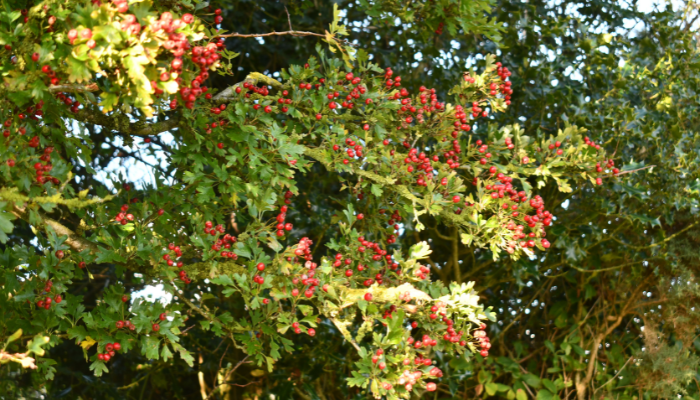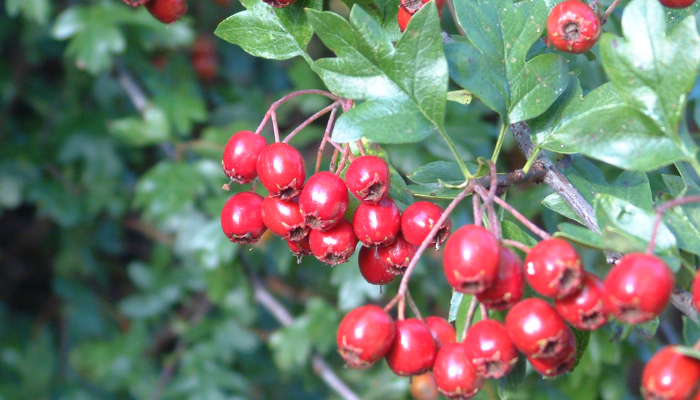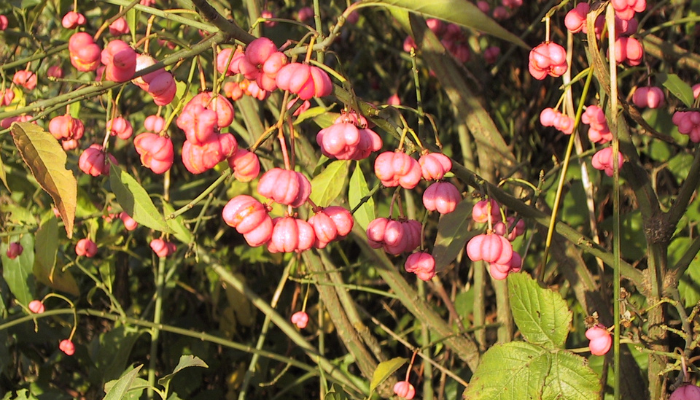22 October 2022
Growing wild – Haws and Spindle

Catherine Keena, Teagasc Countryside Management Specialist takes a closer look at some of our native Irish biodiversity to look out for in the countryside.
Haws

Look out for haws, the red berries of the whitethorn. They are rich in antioxidants and are eaten by birds, such as fieldfare, thrush and migrating redwing, as well as small mammals. In folklore, whitethorn was associated with magic and to interfere with lone fairy thorn trees or trees growing on ringforts or other archaeological features was very unlucky. Boughs laden with haws are not found on trimmed hedges even where cut every three years. Having escaped hedges with mature whitethorn trees and retaining individual thorn trees within topped hedges are both essential for our native Irish biodiversity.
Spindle

Look out for the shocking pink, four-lobed spindle berries called cardinals’ hats. The berries open to reveal four seeds covered in bright orange flesh, while the inconspicuous leaves turn vivid crimson, making this shrub which stand out at this time of year. Spindle grows up to six metres in height and is found mainly on limestone soils. It will grow from seed but may also be propagated from cuttings. The green four sided stems are dense and hard and were used as pegs in rakes, knitting needles, skewers, spinning wheels and looms. So unsurprisingly, it is known as pegwood and is part of our native Irish biodiversity.
See previous Growing Wild articles below:
- Growing wild – Guelder Rose and Sloes
- Growing wild – Purple loosestrife and Lord and Ladies
- Growing Wild – willowherb and water mint
- Growing Wild – dandelion and greater stitchwort
- Growing Wild – willow, primrose and lady’s smock
- Growing Wild – whitethorn and cow parsley
- Growing Wild – bluebells and guelder rose
- Growing wild – Honeysuckle and Foxglove
- Growing Wild – Elder and Ragged Robin
- Growing wild – dog rose and meadowsweet
- Growing wild – Privet and Lady’s Bedstraw
- Growing Wild – Bird’s foot trefoil and Knapweed
Keep an eye on Teagasc Daily for another Growing Wild later in the month. Learn more from Teagasc about Biodiversity & Countryside
